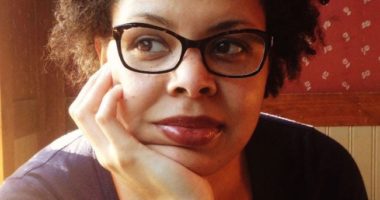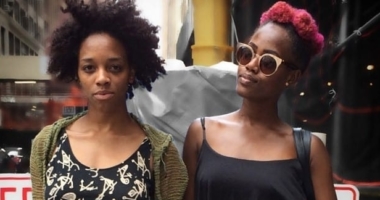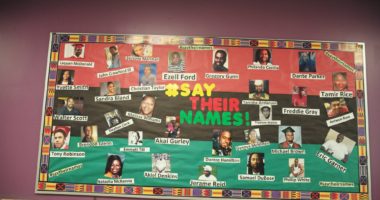Reconciling Your School’s Racist History
As a White woman progressing through college and my internship at Ed Trust, I have come to understand the extent to which systemic racism permeates every aspect of our education system and society. Institutional inequities come through in how we discipline children and resource our schools, for example. In the United States, Black children make up 19% of preschool enrollment, yet 47% percent of out-of-school suspensions, often for lesser offenses. Black students also are more than three times more likely to be suspended from school than their White peers — in some states, this number is even higher. U.S. school districts serving the largest populations of Black, Latino, or Native American students receive roughly $1,800 less per student in state and local funding than those serving mostly White students. For a school district with 5,000 students, that means a shortage of a staggering $9 million per year.
Each day, we are presented with an opportunity to either feed into or dismantle the racist society we live in. Perhaps it is my Presbyterian upbringing, but I understand the bedrock of progress to be truth and reconciliation. So, to my White friends, we must choose, every day, to reconcile with, confront, and understand the history of the institutions in which we all operate.
This year, my high school in North Carolina will mark its 50th anniversary. However celebratory, the landmark presents an opportunity to be honest about what they are celebrating. And, better yet, to think about the ways in which the legacy of the founding families lives on in the daily operations of the institution.
Nearly a decade after the Brown decision, Charlotte-Mecklenburg Schools (CMS) remained intensely segregated. Faced with this reality, Darius and Vera Swann, attempted to enroll their 6-year-old son, James, in the White, neighborhood school. When the Charlotte-Mecklenburg Board of Education rejected the Swann’s request, Julius Chambers, an attorney for the Legal Defense Fund, picked up the case and sued the district, on behalf of 10 Black families.
Amidst fierce resistance, federal Judge James McMillan indoctrinated an integration plan which involved intentional student assignment and the busing of students to schools across the district.
Busing proved to be wildly successful in integrating Charlotte-Mecklenburg Schools. Even more, CMS gained a national reputation for the integration strategy. Simultaneously, White Charlotteans erupted in intense and violent resistance to the practice of busing. Nikole Hannah-Jones accurately notes, in The New York Times, however, that busing became the “race-neutral euphemism that [allowed] people to pretend white opposition was not about integration but simply about a desire for their children to attend neighborhood schools.” In 1971, the Supreme Court of the United States, in Swann v. Charlotte-Mecklenburg Schools case, affirmed the constitutionality of busing as a means to integrate.
Amidst the fierce busing battle that consumed Charlotte in the height of the Civil Rights Movement, White families found new ways to dodge school integration. While some moved to the nearly all-White suburbs of Charlotte, others created private segregation academies, free from the reach of any Court decision. As Swann progressed through the federal court system, one school in particular, my high school, was founded by a community of White families.
Now, I love my school. It is the backdrop of a million wonderful memories and binds me to encouraging classmates and influential teachers. In thinking about what motivates me, it is the people on campus who invested in me and molded me into the person that I am. But, the place I love was founded on the premise of exclusivity — and for 11 of my 13 years there, I had no idea. It wasn’t until I learned about the Swann case in my AP United States History class, and the corresponding busing battle that consumed my city, that my school logo that honors the school’s inaugural year, 1970, felt a little bit different on my back. With any mention of the school’s history, there is vehement, persistent, and powerful denial of any connection to busing or the greater civil rights history.
As I came to realize that my school was founded out of a racist desire to uphold segregation, it was disorienting. Confusion turned into frustration, as I began to notice the ways in which my school failed to support students in the present day. But looking at the history of the institution, it all made sense. The legacy of racism and foundation of exclusivity lived on and manifested themselves in a toxic school culture and in school leadership which, every day, made decisions to preserve and further the legacy of the White families who founded the school.
My last two years of high school, two friends and I battled my school’s Headmaster over creating a LGBTQIA support group. Come to find out, this fight was a 20-year long one. Among the many reasons the Headmaster provided for why this couldn’t happen, was that “many families choose [the school] because we don’t have that.” He implied that being a haven for homophobic families was a selling point. I imagine those same White families that decided to invest in a plot of land in South Charlotte, far from the urban center, to create an independent school amidst the busing battle used the same justification: “many families choose [the school] because we don’t have [them].”
With each new day comes a new opportunity for reconciliation and progress. I see progress and hope in the fact that my school’s leadership eventually permitted the creation of a LGBTQIA support group. And other students have successfully advocated for alliances to support Black students and Asian students on campus. And I see opportunity in the work of my colleagues at Ed Trust, who work tirelessly to shine a light on inequities in the American school system. To make true progress, we must reconcile and resist. As I head back home to North Carolina, I’m ready. So, let’s do it.
Coleman Evans is a Charlotte, NC native and senior at The University of North Carolina at Chapel Hill studying public policy, history, and education. She worked as an intern at Ed Trust for the spring and summer of 2019.








